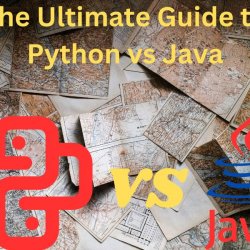A Guide to Different Types of Indexes in Python


Introduction to Indexing in Python
Indexing is an important concept when it comes to programming, as it allows you to obtain specific elements from a larger data set. As a Python user, it’s important to understand the different types of indexes you can use and how each one works. In this blog post, we’ll provide an introduction to indexing in Python for beginners, including a look at numeric, simple, and sliced, sequences, boolean, and nested array indexes.
Numeric Indexes: Numeric indexes provide access to items from the array based on their indices. You can use numbers as an index for a sequence like strings or lists. A simple example of this is with strings: if you want to access the first element of a string, you would use 0 as the index (the 0th position of the string). This same approach can be taken with lists as well.
Types of Indexes in Python
When it comes to programming in Python, indexes can be a great way to help you store and manipulate data. Whether you’re a beginner or an experienced programmer, understanding and utilizing the different types of indexes available will be essential for effective coding. In this blog post, we’ll explore the various types of indexes in Python — from positive and negative indexing to slicing & dicing, nested lists, looping over lists, list comprehension, membership operators, and iterating over a range.
First off, let’s talk about positive and negative indexing. With positive indexing (counting up from 0), you can take advantage of your data starting at the very beginning and moving up until the end — making it an ideal option if you have a lot of content already present. Meanwhile, with negative indexing (counting down from 1), you can start at the end of a list or sequence — which is useful when you’re looking for something quick or need to return results as soon as possible.
Next up is slicing & dicing. This part of Python allows you to go deeper into specific parts in your data; for example, if you want to access multiple elements at once or look for values that meet certain criteria by using comparison operators (<=, >=). Additionally, with nested lists (lists within another list) you can further organize your data according to different variables. Check Out:-Ratings
Count Method for Indexing
The count method is based on the sequence type which includes elements like strings or lists that are ordered in a certain way. Each element within the sequence is assigned a unique position or index number which can be referred to as its “subscript”. You can access any element within the sequence by using its position/index number, although when using the count method it’s important to keep in mind that indexes begin at zero.
You can also use positive and negative indices when using the count method. Positive indices indicate the offset position or distance from the beginning of the sequence while negative indices indicate the offset from the end of the sequence. For example, if you have a list of five numbers (1,2,3,4,5) and you want to access the number 4 you could use either its positive index (which would be 3 since we start counting from 0) or its negative index (which would be 2 since we start counting from 1).
Iteration with loops works great with sequences when trying to search for specific elements or find ranges of values in large datasets; this makes it much easier than manually counting each element to select a value. Additionally, list comprehension makes it possible to generate new lists with only specific criteria by iterating through an existing list. All of these techniques make it much simpler to access data within complicated sequences quickly and efficiently.
Delete Operation on an Indexed List
If you’re a Python programmer, then you already know that the delete operation on an indexed list is one of the most important operations when working with data. But what exactly is an indexed list? An indexed list is a structured collection of items that have been ordered and organized according to an indexing system. To properly understand the delete operation on an indexed list, let’s take a look at how it’s done and the efficiency gain it can bring during execution.
When performing a delete operation on an indexed list that uses a linked list structure, we must traverse through the entire list until we reach the element we want to delete. On the other hand, when using an array for indexed lists, deleting elements can be accomplished more quickly since there is no need to traverse through all indexes before deletion. This efficiency gain comes from being able to access elements in constant time regardless of their location in the array compared to traversing through the entire linked list and having time complexity grow linearly with each node added or deleted. Check Out:-Tech Review
Numeric Ranges as Indices
When working with Python, it’s important to understand the different types of indexes available and how they can be used. Numeric ranges are one such type of indexing method; these sequences of numbers from a range of values can be used to access various elements in a sequence. In this blog post, we will explore numeric ranges as indices – breaking down positive and negative values, step sizes, start/stop values, and how to use them in slice notation.
To begin with, let’s define a numeric range. A numeric range is an immutable sequence of numbers that form a range between two starting and stopping values. It includes all integers from the start value up until (but not including) the stop value. You can also add in a “step size” – an integer value indicating the interval between each number contained within the range – to create more complex sequences. An example of this would be range(1, 10, 2), which would return 1, 3, 5, 7, and 9 as elements in your sequence. Check Out:-Technology Reviews
Looping Over a Sequence with Indices
Have you ever wanted to loop over a sequence with indices in Python? Well, look no further! This blog post will give you a comprehensive guide to the different types of indexes available and how to loop over them.
Let’s begin by talking about what an index is it’s a number that identifies the position of an item within a list or array. Indices are used when iterating through a sequence, as they will provide information to the program on which element of the list is currently being accessed.
Iteration is the process in which items in a sequence are looped over one at a time until all elements have been processed. This can be done using loops such as for and while statements, along with range() and list comprehensions. Range() is a built-in function that creates sequences of numbers, while list comprehension allows us to create lists without explicit loops.
Nested loops are frequently used when dealing with multidimensional data structures such as matrices and arrays, where multiple levels of indices need to be used to access an element. This can also be achieved by using tuple unpacking this method involves declaring multiple variables at once when iterating over tuples or lists, thus allowing us access to each individual item in the sequence. Check Out:-In-Depth Tech Reviews
Exploring Different Types of Indexes in Python Allows You to Expand Your Knowledge & Improve Your Programming Skills
Using indexes in Python is an important part of understanding programming and achieving success in coding. Knowing how to effectively index in a variety of ways can make a big difference in your programming skills, as well as your knowledge base. This guide will provide an overview of the different types of indexes available in Python, and how each can be used to improve both your programming skills and overall knowledge.
Python indexing starts with numeric indexing. Numeric indexing is the most basic form of Python indexing, starting at 0. Every element has its numerical position, and the numbers are counted up from 0 until you reach the end of the list. Numeric indexing allows you to access individual elements from a list or string directly, without needing extra steps or instructions.
Negative indexes can also be used in Python for accessing elements from a list or string. Negative indexes start at 1 at the end of a list and count backward until they reach 0 at the start of the list. Negative indexes are especially useful when extracting data from the end of long lists, rather than having to scroll to find what you need near the start of it.
Slicing techniques are also popular when it comes to working with lists or strings in Python. With slicing techniques, you can separate parts of strings or lists and create new strings or lists with this data manipulated however you want it to be manipulated. Slices allow quick extraction without having to go through individual items every time you want something extracted from a list or string. Check Out:-Analytics Jobs






Ingen kommentarer endnu